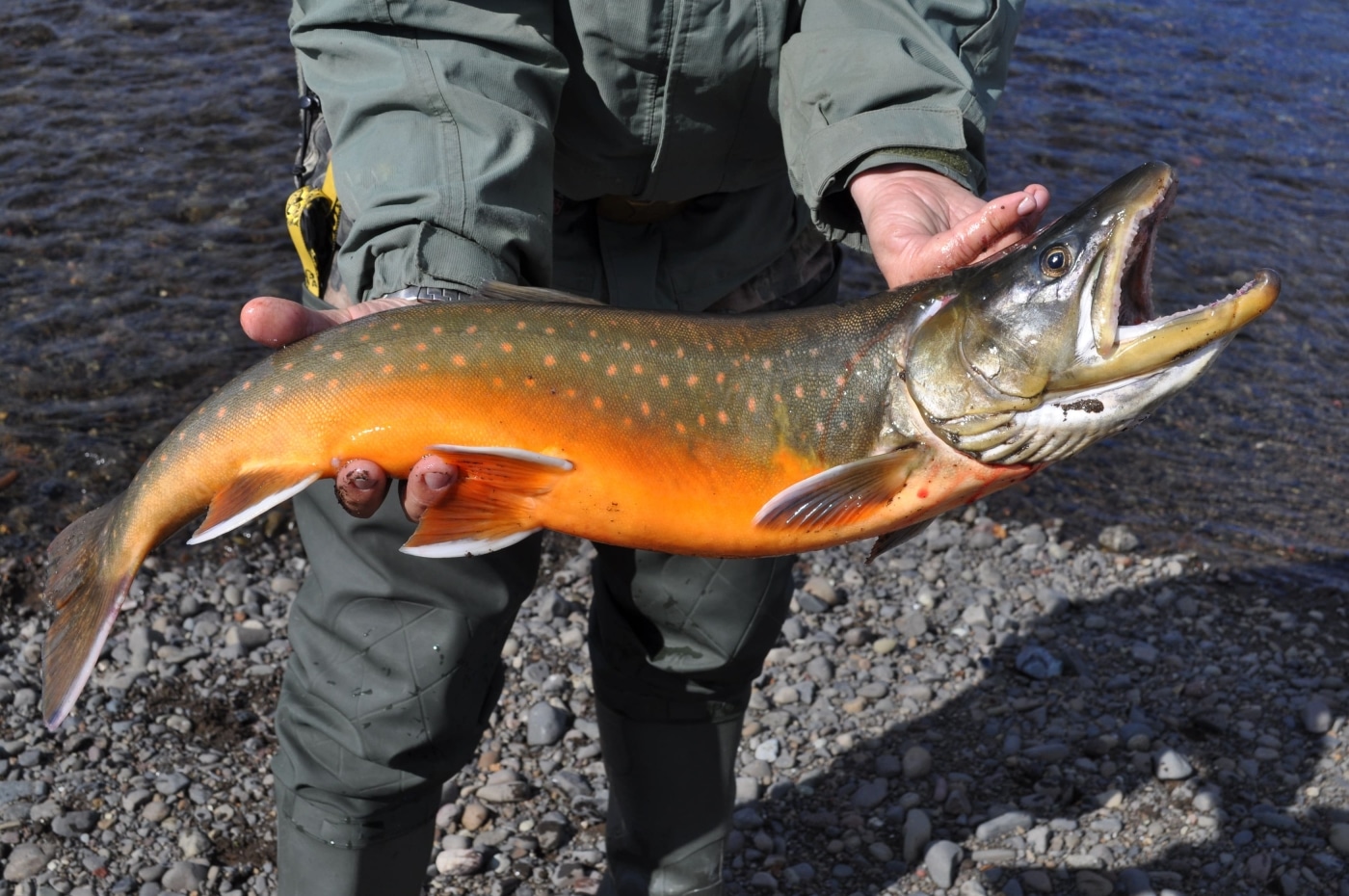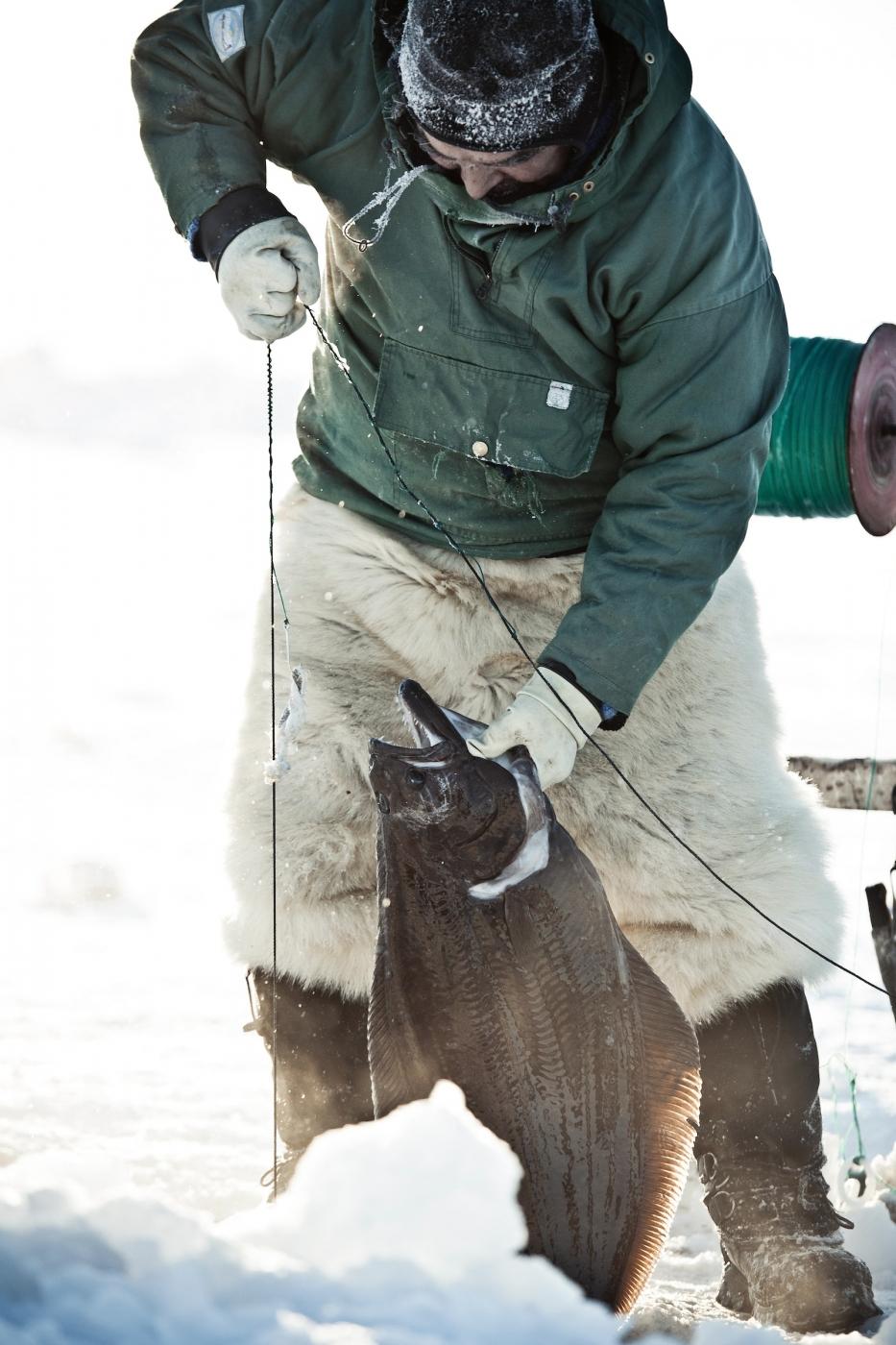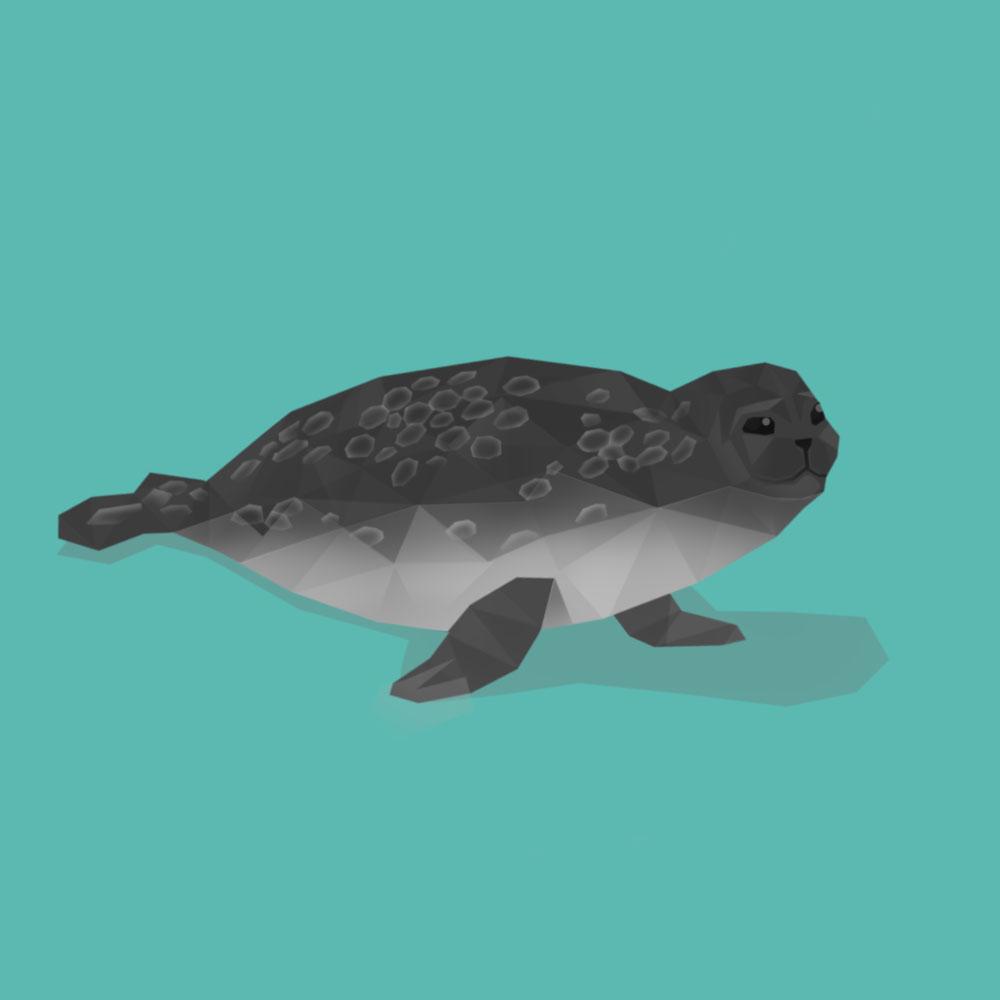Greenland’s waters are known to contain more than 250 species of fish, and the figure is probably somewhat larger, as life in the deeper waters is almost unknown.
The global warming of the world seas also causes more species to migrate further north towards Greenland waters, such as mackerel, monkfish and porbeagle.
This guide describes some of the most common fish species that are relevant to the angler, or that you can find on the menu or buy on “the board” (seafood market) – In all towns and cities, you can find a “board” where local catchers and fishermen are selling out of today’s fresh catch.
Atlantic Salmon
Kapisillik (GL)
Salmo salar (LAT)
The Atlantic salmon is a silvery, agile predatory fish with dark back, light belly and black, X-shaped spots on the upper side and head. It can be 70-120 cm long and weigh up to 20-30 kg. During the spawning season, salmon, especially males, often turn a bronze colour with red spots.
North American and European salmon migrate to the southern Greenland waters in late summer and autumn, and up to Uummannaq and Tasiilaq. During this period, there are excellent opportunities for the angler. The salmon only spawn in one river in Greenland, the Kapisillit River in the inner part of Nuuk Fjord.
The salmon is anadromous, which means it migrates from the sea up rivers to freshwater to spawn and fertilize the eggs. For the first 4-6 years, they live in freshwater, after which they go to sea and later return to the same river every 1-3 years to spawn.
The salmon mainly feed on fish and squid in freshwater also on molluscs and crustaceans.
Arctic Char
Eqaluk (GL)
Salvelinus alpinus (LAT)
Arctic char are similar to salmon but are known for their smaller scales and some white fringes on the belly and pectoral fins. It is also generally smaller; 50-90 cm in length and up to 10-12 kg.
Arctic char come in many colours. In the sea, it is silvery with a dark, bluish back, white spots and light belly. During the spawning season, the underside becomes reddish or golden, and the male’s jaws become hook-shaped. During its stay in freshwater, the upper side is a dark blue to greenish and brown, while the belly stays golden.
In Greenland, Arctic char are often called salmon, while “real” salmon are called scale salmon with reference to their markedly larger scales.
Like all salmonids, Arctic char is anadromous, meaning it lives in saltwater and spawns in freshwater. They swim up rivers in July-Sept, which is the peak season for char fishing. The fish spawn in August to October, after which winter is spent in lakes and rivers until the char return to sea in the spring.
For young fish, this happens only when they are 4-6-years-old. Some live their entire lives in freshwater. Char mainly live on smaller fish, fry, snails and crustaceans.
Atlantic Cod
Saarullik (GL)
Gadus morhua (LAT)
The cod is a well-known eating fish with an elongated, dark-spotted body, light lateral line, three dorsal fins, two anal fins and a characteristic barbel on the lower jaw. It grows throughout its life and can weigh over 30 kg and live for 20 years or more. However, they rarely grow very large due to fishing.
Other important Gadiformes in Greenland are Greenland cod (uvak) and the smaller Polar cod and Arctic cod. Greenland cod is an excellent eating fish that can often be caught directly from the land, and it is distinguished from ordinary cod by its smaller size, larger eyes and thicker barbel.
Cod distribution in Greenland varies widely, but during “good” periods it can be numerous both in fjords and at sea. Climate change and higher water temperatures can mean that the cod returns to Greenland waters in large numbers.
The cod live in shoals at depths of 700 meters, often near the bottom, but also in the water column (pelagic).
Its food consists of fish, squid, as well as benthic animals, which the cod finds using its barbel. The adult fish spawn in winter, where a large female can spawn up to 5 million eggs.
Wolffish
(Atlantic, Spotted & Northern)
Qeeraaraq, Qeeraq or Najorpaligaq (GL)
Anarhichas lupus/minor/denticulatus (LAT)
In Greenland there are three species of wolffish – striped, spotted and blue – which, as the names suggest, can be distinguished by their appearance, but otherwise resemble each other physically and by their way of life. They are excellent eating fish except for the blue one that has soft meat.
The wolffish can be recognised by its elongated body with elongated dorsal and anal fins and a grim-looking head with three rows of crushing teeth in the palate. The largest ones are 100-150 cm long.
The wolffish is common on the west and east coasts to the north to Upernavik and Tasiilaq. It lives in rocks or sandy seabeds down to a depth of 1000 metres.
The unique feature of wolffish is that they form monogamous pairs that are shared about a common cave throughout their lives. The female lays up to 10,000 eggs on the seabed, and both parents protect the young for up to 4 months.
The wolffish uses its powerful teeth to crush its food, which usually consists of seafood, snails, sea urchins and starfish.
Golden Redfish
Suluppaagaq angisooq (GL)
Sebastes marinus (LAT)
The redfish is easily recognised by its entirely red body, a large mouth with an underhung jaw and large eyes. It also has spikes on the front gill cover and the front of the dorsal and anal fins. The spikes are non-toxic.
Like other deep-sea fish, it grows slowly and can be over 60-years-old and up to 100 cm long. It is an excellent eating fish that can be caught on longline or hook. When you lift it out of the deep water, the fish dies immediately and the eyes “pop-out” due to the pressure difference.
The redfish is common in fjords and waters to the north to Uummannaq and Tasiilaq. It lives at depths between 50 and 1000 metres, and feeds on crayfish, small fish and fish fry.
Its primary spawning ground is in the Irminger Sea southwest of Iceland. The female gives birth to live fry during the month of April-May, and the fry are transported by sea current to growing areas in south-eastern and southern Greenland.
The related species, deep-sea redfish, resembles the golden redfish and has the same distribution, but is known for a distinct projection on the lower jaw. The rarer species, Norway redfish, are recognised by 3-4 dark crossbands and are only found off Southeast Greenland.
Greenland Halibut
Qaleralik (GL)
Reinhardtius hippoglossoides (LAT)
The Greenland halibut is a large, low-arctic flatfish, where the right side (eye side) is dark grey and the left side (blindside) light brown. The left eye sits on the top of the head, and it grows throughout its life and can be 30-years-and weigh over 50 kg.
The Greenland halibut is common in fjords and at sea to the north to Qaanaaq and Ittoqqortoormiit. The Greenland halibut prefers depths of 200 to 2000 metres, and its primary spawning ground is in the central Davis Strait off Nuuk. The largest females can spawn up to 280,000 eggs, and the hatched fry look like an “ordinary” fish with an eye on each side of the head, but as it grows and becomes flat, the left eye migrates towards the eye side (backside).
Greenland halibut stay mostly at the bottom where it catches fish, shrimp and benthic animals, but it also swims up in the water column in search of, amongst other things, squid and Polar cod.
Capelin
Ammassak (GL)
Mallotus villosus (LAT)
The capelin is a small, slim, silver-shiny fish (15-25 cm) with a pointed head, large underhung jaw and dark/greenish back. It is a popular eating fish, especially dried, and it is also used as industrial fish and animal feed, and the roe is used for sushi.
The capelin is widespread throughout the Arctic and spawns along the coast of Greenland to the north to Uummannaq and Tasiilaq.
It lives on zooplankton and is itself an important food source for birds, predatory fish, seals and smaller toothed whales. In May-July, capelin gather in huge shoals to spawn in shallow water. The fish can be so closely packed together that the innermost ones are pushed up onto land and beaches.
Greenland Shark
Eqalussuaq (GL)
Somniosus microcephalus (LAT)
The Greenland shark is considered to be the oldest vertebrate animal in the world, as captured individuals are believed to be over 300-years-old and perhaps up to 500-years-old. It is a large shark that can be 3-5 metres long and weigh up to 1 tonne. The females are the largest.
The Greenland shark is a deep-sea shark that is widespread in deep, cold water, probably right around Greenland near the north-eastern waters.
The catch of Greenland shark is modest today on, amongst other things, longlines and as by-catch in trawls. The meat of the shark is said to be poisonous and is boiled or dried before being used, primarily for dog food. In the past, its liver was used to produce oil, and thousands of sharks were caught every year until the 1950s.
As it lives in deep water (up to 2000 metres), little is known about its way of life. The first time it was filmed in the wild was as late as 2003. The shark lives on carrion, which it finds with its excellent sense of smell, but it also hunts fish, squid and marine mammals.
It can effectively flay prey with its needle-sharp teeth and even bite a seal in half.
The adult sharks are first thought to be sexually mature as 100-year-olds, and pregnant females or new-born pups that are only 40-60 cm long, have only been observed a few times.

























